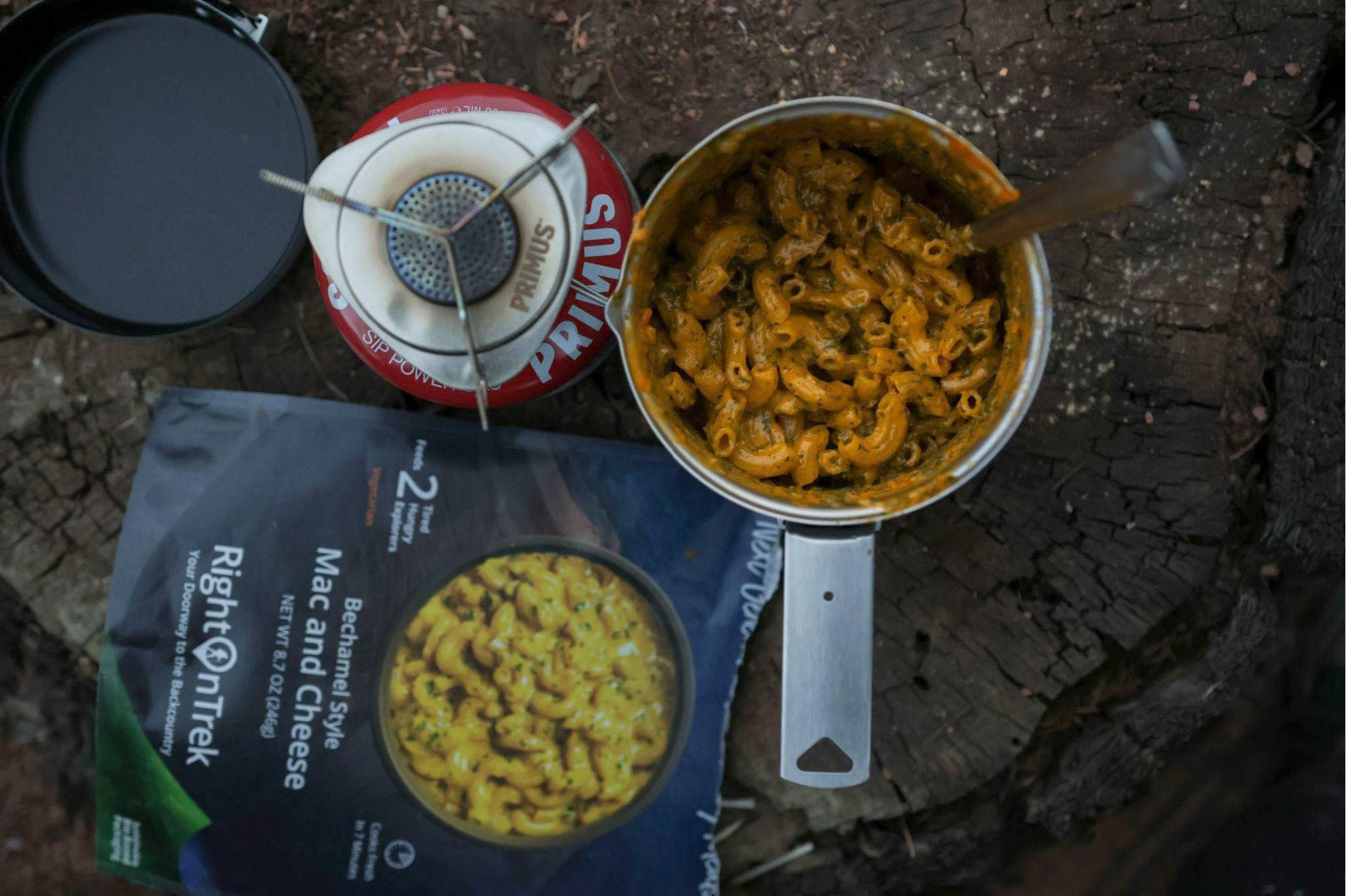
Backcountry Cooking Tips
Backcountry cooking tips and other tricks for the best experience with RightOnTrek meals
First, a few ground rules:
- Never cook inside of a tent!
- In bear country, cook at least 70’ away from your tent
- Set up your stove on a durable surface
- Only add food to water that has been treated or boiled
- Pack out your leftovers - don’t leave them for animals to find
- Always hang up your cooking equipment for the night
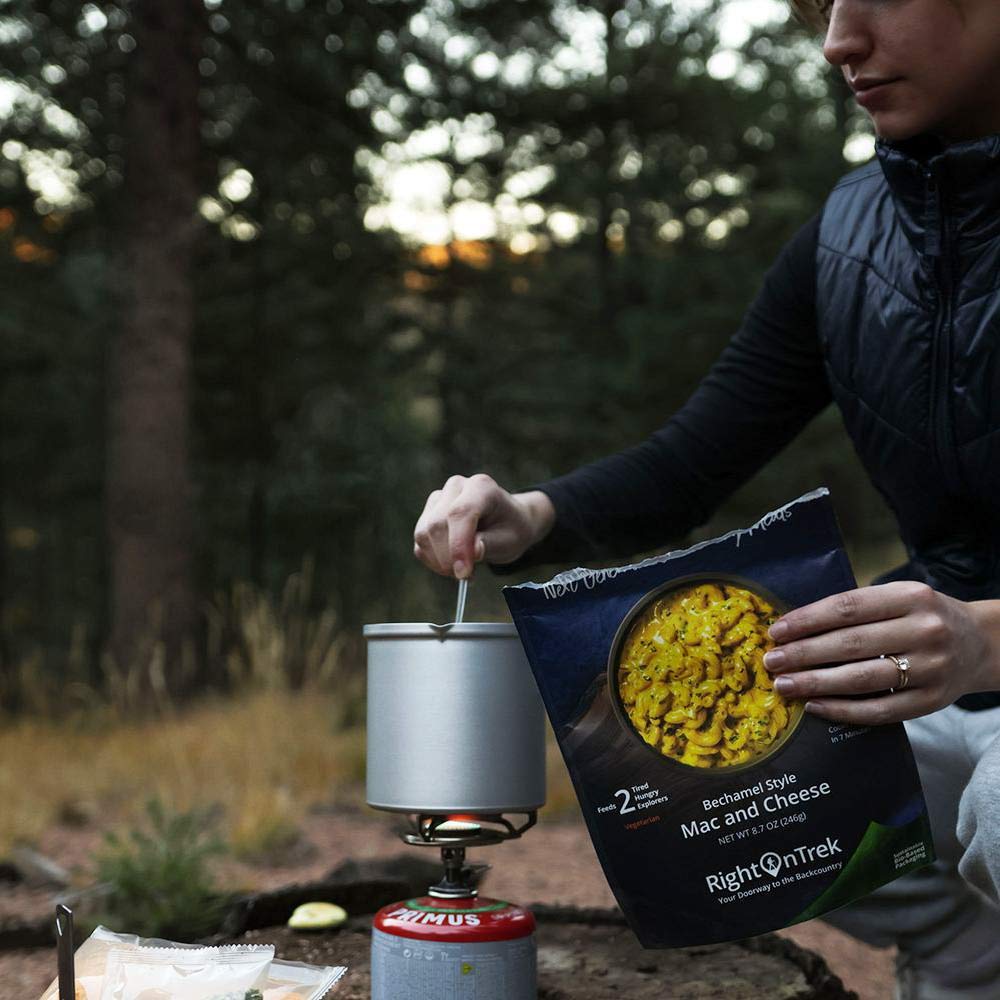
Gear for preparing RightOnTrek Meals
Our meals are generally best prepared on a stove with some simmer control, using a pot sized at about 1 liter for single-servings, 1.5 liters for two servings, and 3 liters for four servings. It’s also helpful to have some way of measuring fluid ounces of water to ensure your finished meal is at the right consistency. Our lightweight mugs with volumetric measurement lines are great for this!
For info about how much fuel you will need, see our FAQs. Generally, it depends on a few factors including how many people in your group, how many hot meals and drinks you plan on having each day, as well as generally how cold it’s going to be where you are cooking.
Steps to cooking a RightOnTrek Meal:
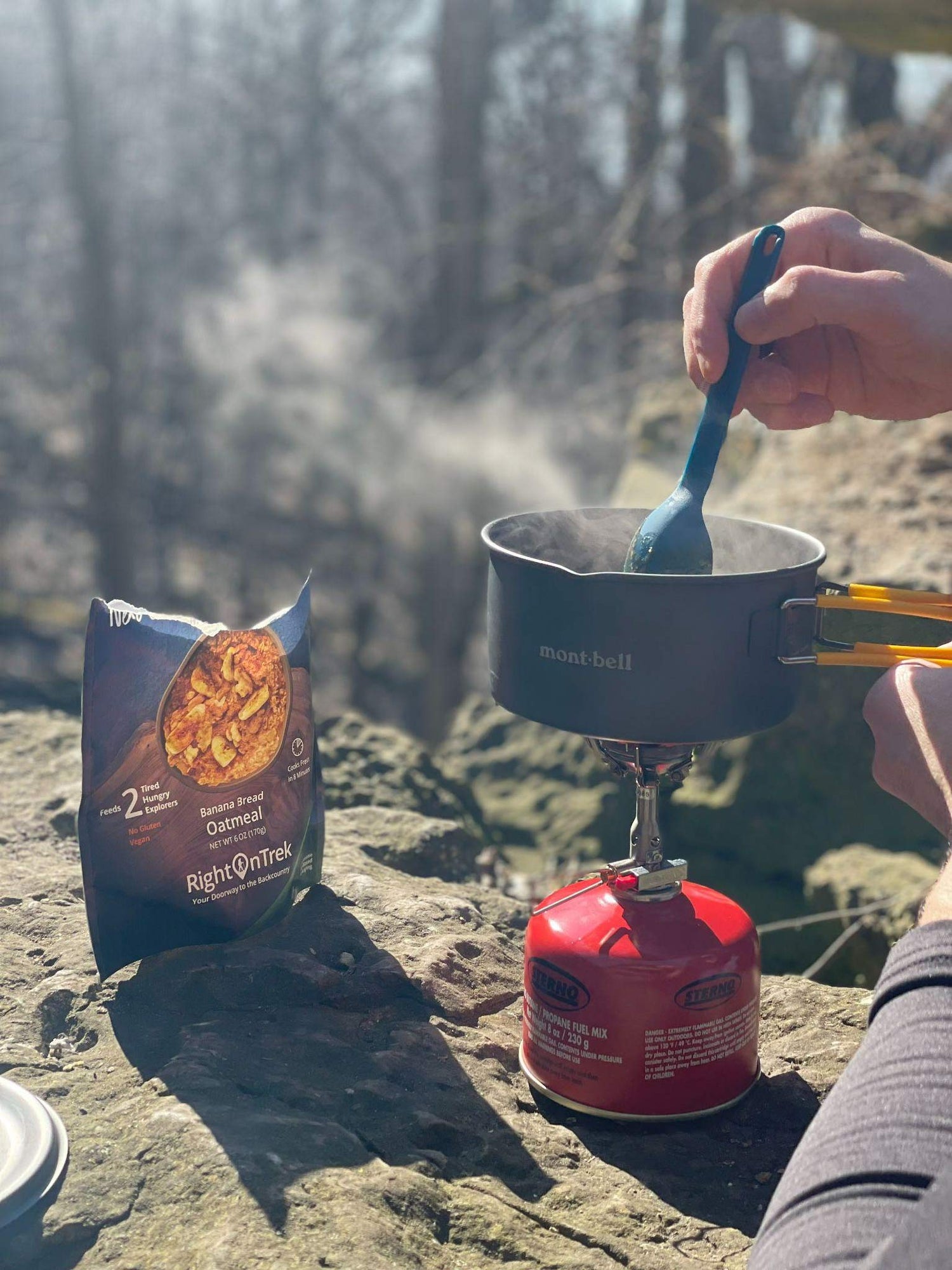
Our meals aren't meant to be rehydrated with hot water in the bag. Rather, you cook them in the pot just like you would on your stove at home. This is faster than rehydrating, results in better texture, and allows us to use packaging sourced from sustainable materials. We’ve carefully tested and refined the process to make cooking RightOnTrek meals easy and fun.
Each meal comes with simple instructions printed on the back. In general, you just boil some water, add the food, turn down the heat, stir a bit and cook for 3 to 7 minutes (depending on meal).
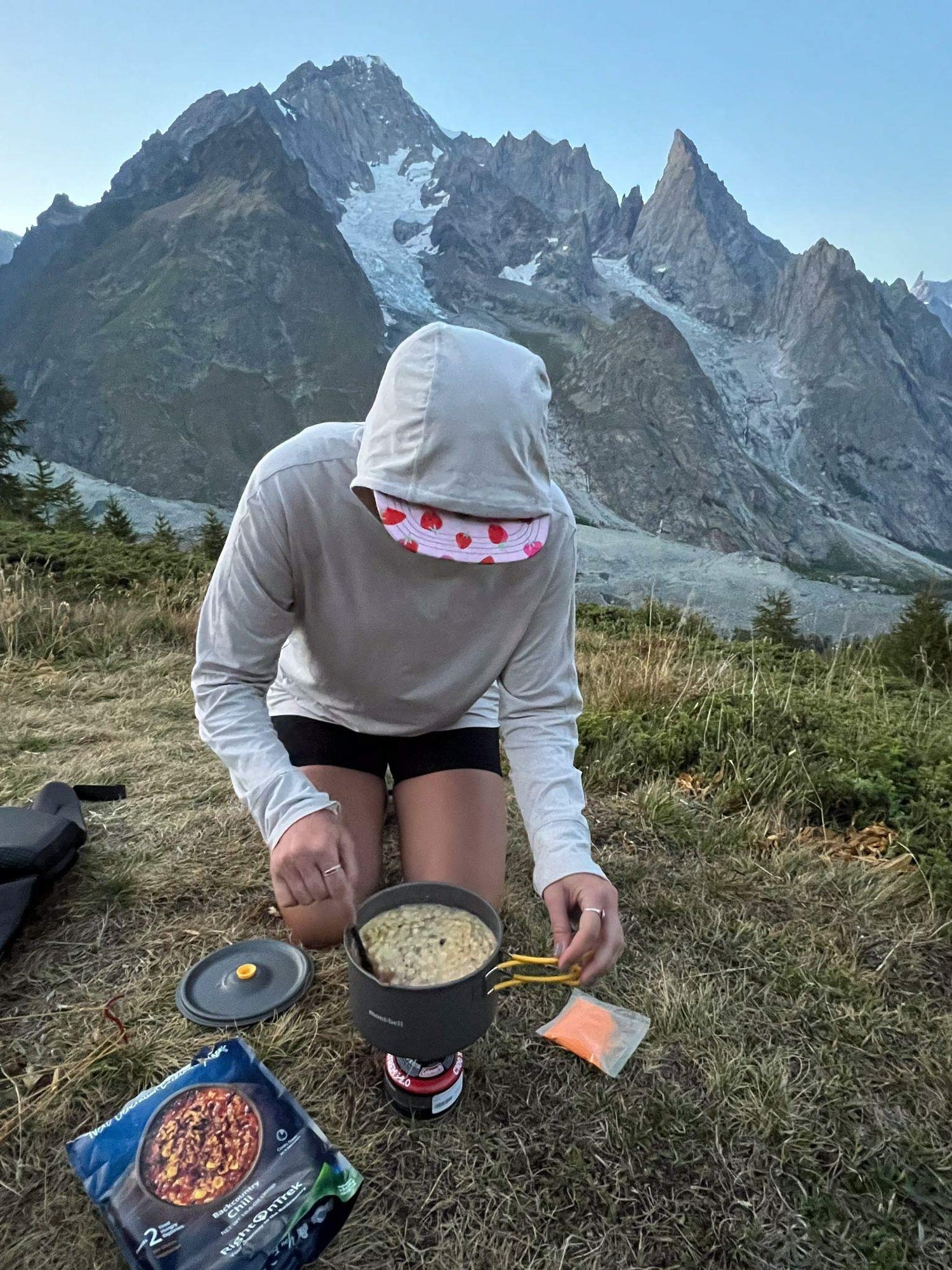
Cooking at high elevations
Our meal products are tested between 3000' and 6000' feet in the wild places of Northwest Montana.
For elevations greater than 6000', you may need to add slightly more water and increase cooking times to compensate for the lower boiling temperature.
In general, a good rule of thumb is to add 3% more water and cook 30 sec longer for every 1000' elevation above 6000'.
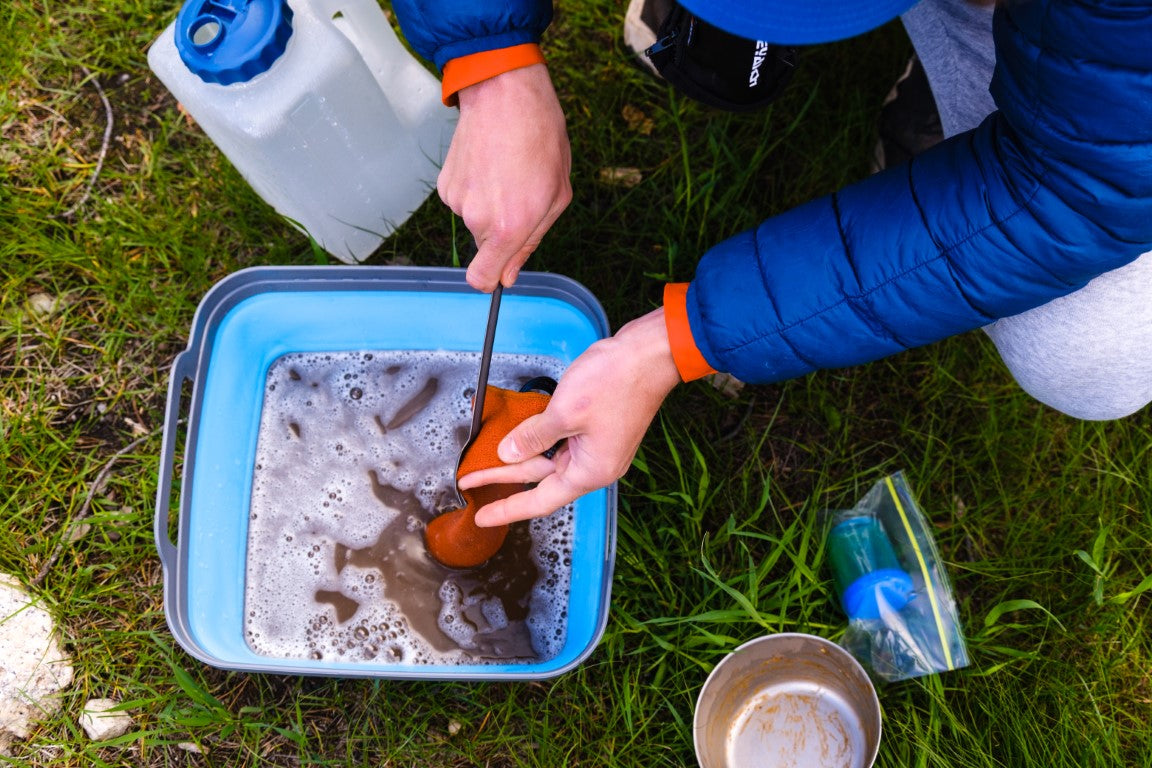
Follow Leave No Trace
How should I wash my dishes?
Leftover food is not good for wild animals or plant life. First, scrape up and pack up trash scraps. Gather water for washing from the stream or lake, then walk at least 150 feet away to wash dishes. Try to gather all dirty water in a single pot. It is best to wash pots right after your meal. Pine needles, sand, and pinecones make great natural scrubbers. Snow needs to be handled carefully to avoid spreading debris. Sponges just carry bacteria.
What to do with dishwater?
If there is large debris, strain with a mesh strainer and pack out waste or burn. Pouring your dirty water into a waste hole and burying it is the best way to ensure wildlife and water sources are protected. Otherwise, disperse the dishwater over a wide area.
Alternative cooking methods for RightOnTrek Meals
We’ve had many creative suggestions for how to prepare RightOnTrek meals while avoiding cumbersome dishwashing. Here are a few of our favorites:
COOK POT LINER BAGS
Bring extra-small crock pot liner bags and follow this procedure:
- Pour 8 to 12 oz water directly into the pot
- Open the liner bag, place on water in pot, and pour water needed for the meal into the liner bag. Roll up any excess material.
- Fire up the stove and get the water outside the bag to a boil
- Add the dry ingredients to the water inside the liner bag
- Simmer for the required amount of time, covered
- Turn off stove and let sit a few minutes - enjoy hot!
Use the extra, still clean, water in the pot for a hot drink or washing dishes
QUICK-BOIL and COVER method
If your stove does not have good simmer control, or just to conserve fuel:
- Boil the required amount of water
- Add the dry ingredients and stir for 1-2 minutes.
- Turn off the stove and cover the pot
- Wait for a duration of about twice the recommended active cook time printed on the package, and depending on the meal, your food will be ready.
Get 20% off your next order
Sign up for our emails and be the first to know about new meals and exclusive offers.



